Unto Labs, a crypto project led by former Jump Crypto employees, is quietly building the next generation of "performance monster" blockchain. On April 29, the project completed a $14.4 million funding round, achieving a valuation of $140 million, co-led by two major institutions, Framework Ventures and Electric Capital.
Core developer Heeger is creating a "self-developed engine" for this new chain—a virtual machine called ThruVM based on the RISC-V architecture, aiming to make it easy for Web2 engineers to go on-chain, with a development experience no longer limited by EVM and BPF.
What exactly is Unto Labs?
In an era where memes are rampant and AI concepts are flooding the market, a startup with almost "zero publicity" is quietly performing surgery at the very bottom of the chain—Unto Labs, dedicated to reconstructing the "operating system" of the blockchain world.
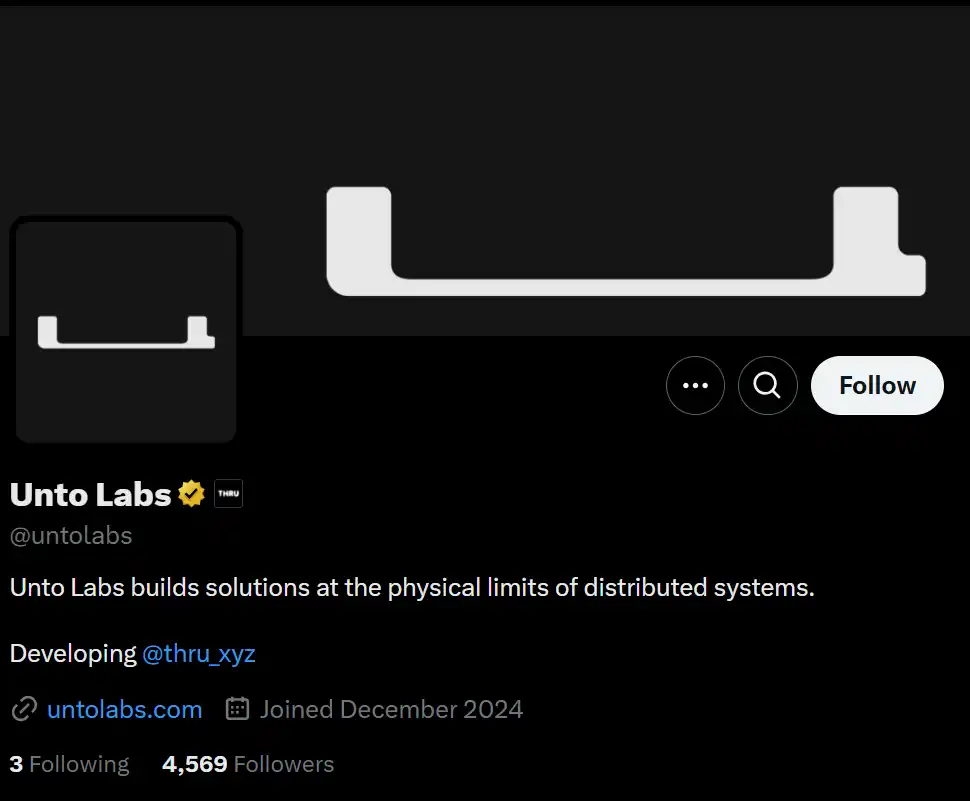
Unto Labs is a tech-focused startup team concentrating on building a new Layer 1 blockchain infrastructure, with its core product being a high-performance virtual machine and blockchain network still under development, codenamed Thru. The ambition behind this name is clear: they do not want to create another "faster Ethereum," but rather to completely break the existing virtual machine paradigm and reconstruct the underlying architecture of on-chain operating logic.
You can think of Unto as "the people building new chips for the chain world"—what they aim to do is provide a more open, flexible, and robust execution base for future applications that have yet to emerge.
The project's tech stack revolves around "modular design." The core idea proposed by founder Heeger is that developers should have the freedom to combine on-chain logic like building with Legos, rather than being constrained by fixed runtime frameworks.
This also means that in the future, dApp developers can deeply customize their virtual environments, insert different modules (such as data validation, execution engines, concurrency logic), and even freely choose programming languages, no longer limited to Solidity. Unto's goal is clear: to create a "developer-defined rules" virtual execution environment, providing infrastructure support for the next generation of on-chain games, AI agents, DeFi systems, and more.
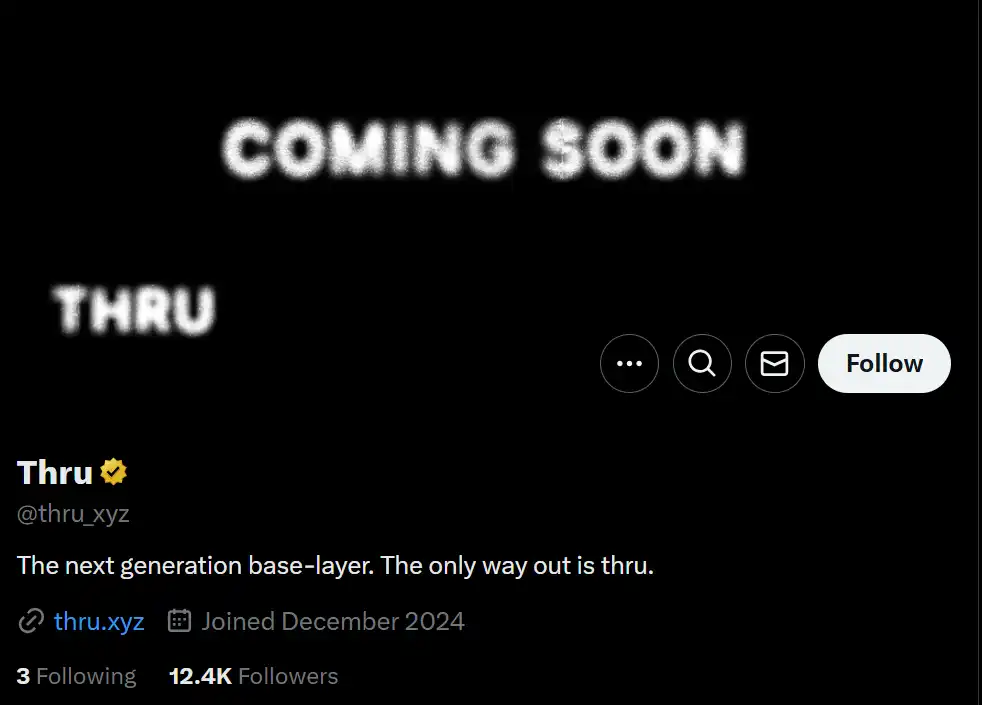
The design of the Thru blockchain combines innovative consensus mechanisms with a highly customizable VM structure, attempting to achieve true "global-level load" performance capabilities while balancing decentralization and user experience. The project is currently in the Alpha stage, open for testing only to a small number of technical partners, and has not yet launched a mainnet or testnet, but early feedback indicates it possesses strong elasticity and performance scalability, especially suited for high-complexity on-chain applications.
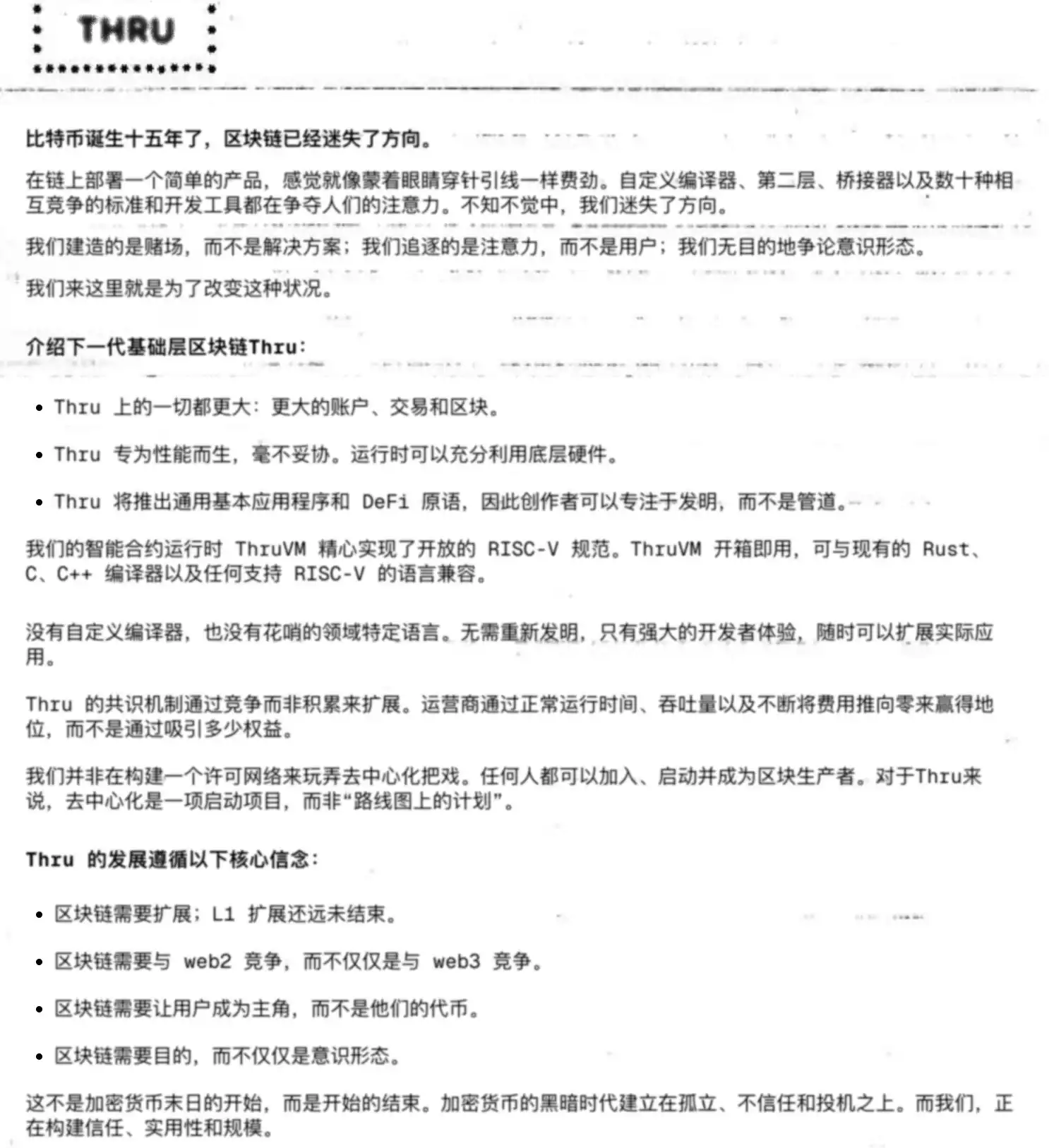
What makes Unto special is not only its technical ambition but also its restrained stance that "contradicts market sentiment." In a restless market, they have not told meme stories or chased after buzzword concepts, but instead quietly refined a system engineering that is deep and robust enough. If EVM opened the first wave of smart contracts in Web3, what Unto aims to do is lay a solid foundation before the arrival of "super application chains."
Perhaps it is not yet its "moment to shine," but for builders truly focused on underlying innovation, Unto is likely the next technology paradigm worth long-term investment.
Who are the founders?
The technical strength of Unto Labs is not just "advanced concepts," but is supported by a group of veterans who have built "real things." The team has not chosen the old path of "quick launch, quick token issuance," but is diligently focused on creating "chip-level" technical architecture.
Key figures include Heeger and Twitter user @CantelopePeel (real name Ben Eidinger). Heeger is the main developer of ThruVM, leading the modular architecture design of the entire virtual machine, possessing deep capabilities in building underlying systems.
@CantelopePeel is even more renowned—he was a core engineer at Solana, leading the development of the high-performance verification client Firedancer. This is a key component created by Solana to break through network performance bottlenecks, representing one of the highest standards of current high-performance on-chain verification. One is working on EVM, the other on Firedancer; together they form a "dream team of tech enthusiasts in the blockchain space."
There is also a co-founder @b3b0pt, who has less public information available, but according to community sources, he also comes from Jump Crypto. The entire core team of Unto currently consists of only 5 people, making it a "high-density combat unit." However, with the completion of funding, they plan to expand to 10 people, focusing on strengthening underlying development and business expansion.
It is worth noting that Jump Crypto is known for its technical prowess, and projects founded by its former members often continue the style of "low-key, pragmatic, and technology-first." In a market filled with hype around AI, memes, and RWA, Unto's "silence" has become a rare technical signal.
Funding lineup: Major institutions betting together
Unto Labs has completed a $14.4 million funding round, co-led by Framework Ventures and Electric Capital, both of which are top-tier VCs in the crypto space, having invested in star projects like Chainlink, Aave, NEAR, and EigenLayer.
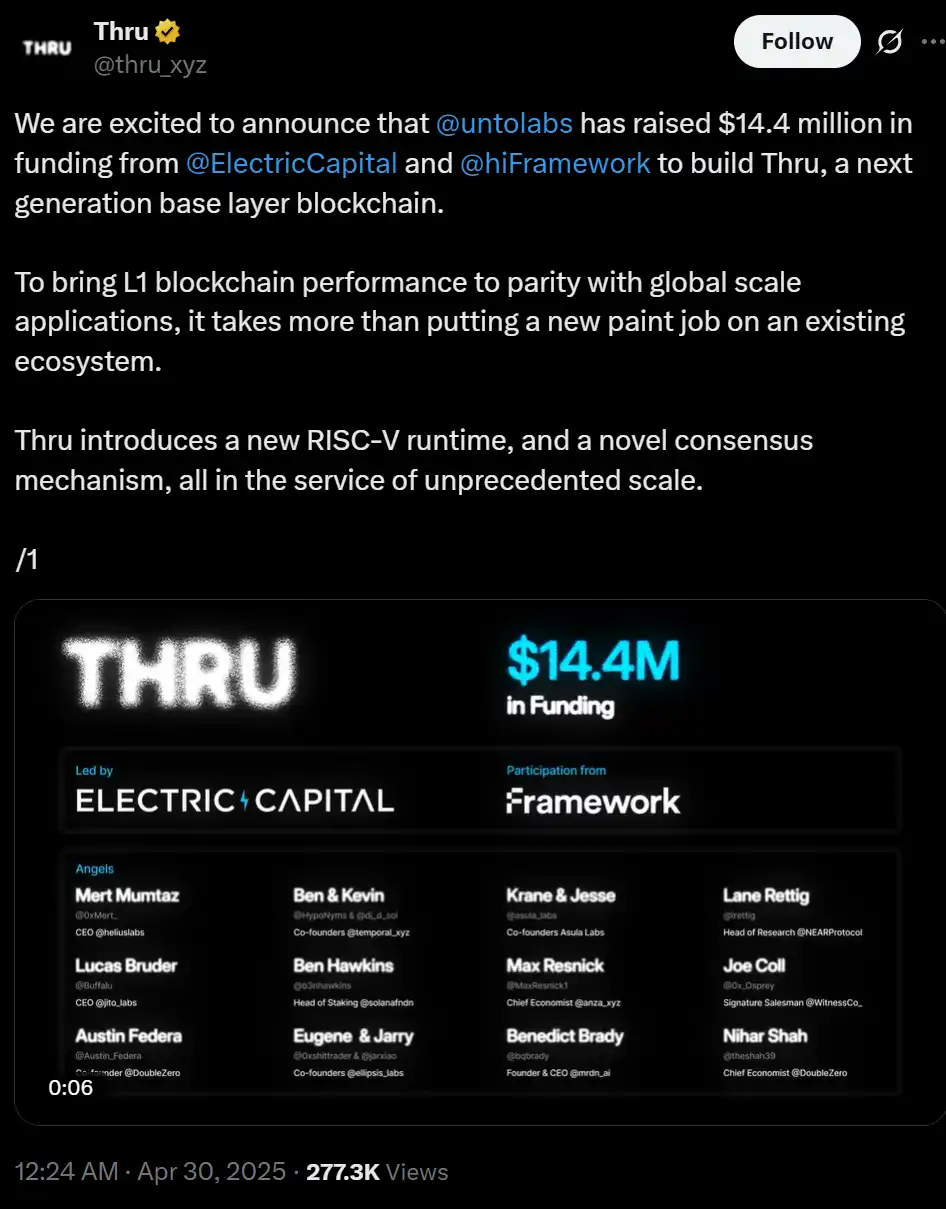
This funding round values Unto at $140 million, and the funds will be used to expand the team, accelerate ThruVM development, and promote ecosystem building. The endorsement from these two institutions also demonstrates the market's high recognition of Unto's technical direction.
Project technical highlights
The Thru blockchain being developed by Unto Labs is a high-performance Layer 1 project aimed at the integration of Web2 and Web3.
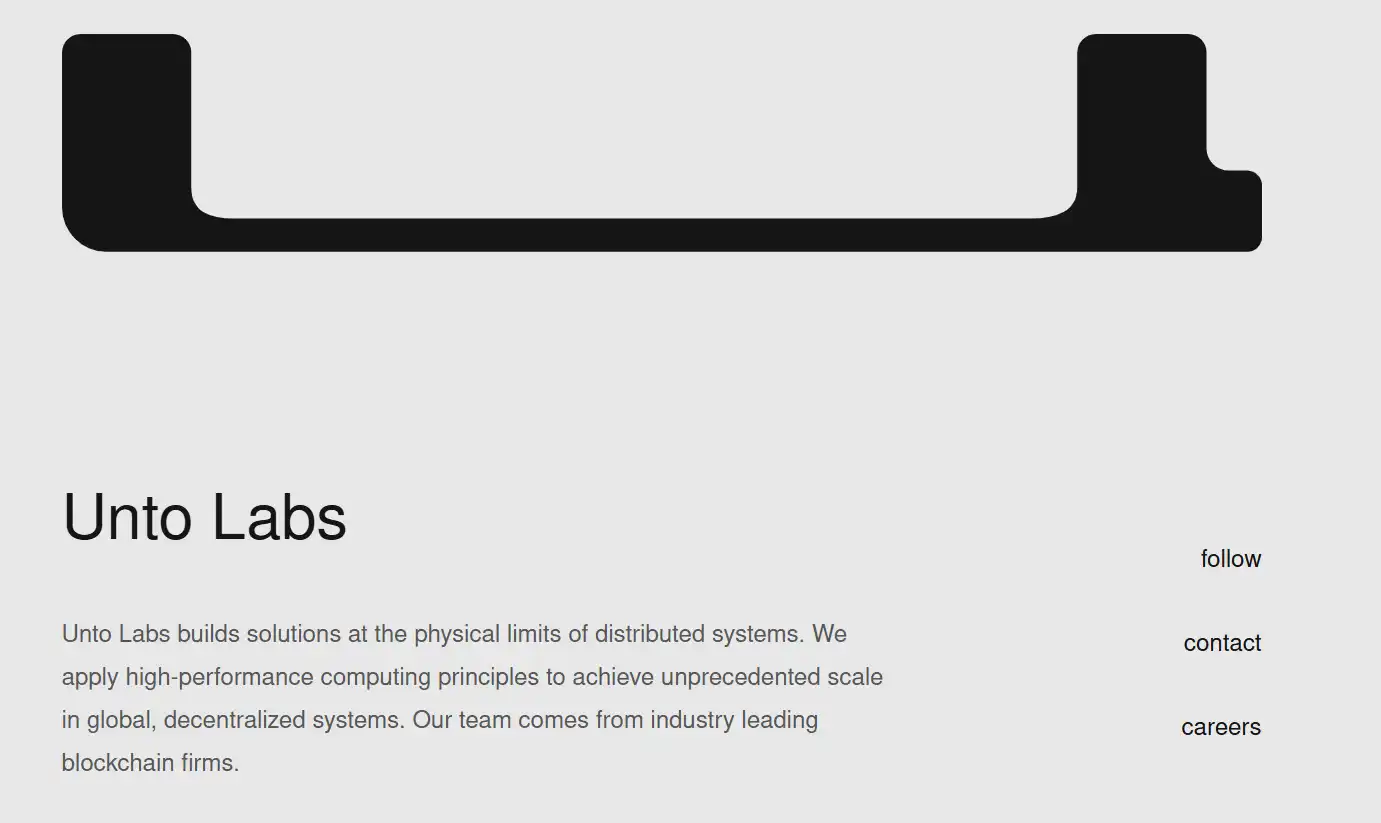
Its core technical highlights include the self-developed ThruVM virtual machine, designed based on the open RISC-V architecture, supporting mainstream programming languages like Rust and C++, lowering the barrier for Web2 developers to enter the blockchain space. Compared to Ethereum's EVM and Solana's BPF, ThruVM has potential advantages in compatibility and development efficiency.
In terms of consensus mechanisms, Thru abandons the traditional cumulative models of PoW and PoS, attempting a new mechanism based on competition, aiming to enhance network throughput and confirmation efficiency, supporting larger-scale account and transaction demands. In terms of performance, Thru claims its target is 10 times that of Solana, intending to serve large application scenarios including DeFi, gaming, and social networking.
Although specific implementations have not yet been disclosed, the team has previously participated in the development of Solana's Firedancer, providing experience assurance for its high-performance commitments. Unlike most chains focused on crypto-native scenarios, Thru emphasizes penetration into enterprises and traditional industries, expanding use cases in supply chains, the Internet of Things, and traditional finance, attempting to break the boundary limitations of blockchain.
Additionally, the team has first-line development experience from Solana and Firedancer, with solid technical strength. If its goal of "performance being 10 times that of Solana" can be realized, Thru has the potential to become a new high ground for scenarios such as DeFi, GameFi, and social applications. The early bets from top VCs also lay a solid foundation for its ecosystem launch and developer incentives.
However, Unto Labs' development also faces some challenges. The development of high-performance blockchains involves complex consensus mechanisms, virtual machine optimization, and network stability, and Thru's performance goals need to be validated through testnets. Moreover, the Layer 1 track already has strong competitors like Solana, Aptos, and Sui, and Unto Labs must attract users through unique technologies and developer incentive measures. Currently, the project's community is relatively small, and it needs to increase market promotion efforts and strengthen developer education to build an active ecosystem.
The project is still in the early development stage, and in the future, the success of Thru will depend on the realization of technical implementations, the construction of a developer ecosystem, and differentiated performance compared to other competitors in the market.
免责声明:本文章仅代表作者个人观点,不代表本平台的立场和观点。本文章仅供信息分享,不构成对任何人的任何投资建议。用户与作者之间的任何争议,与本平台无关。如网页中刊载的文章或图片涉及侵权,请提供相关的权利证明和身份证明发送邮件到support@aicoin.com,本平台相关工作人员将会进行核查。




